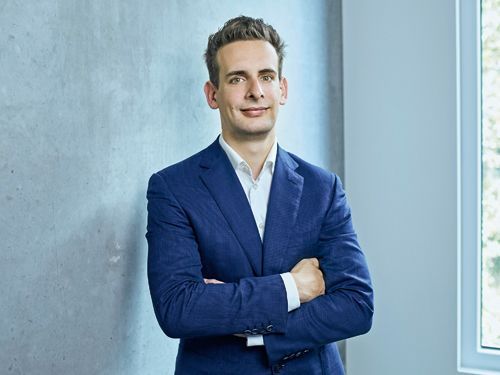The co-living proof
Residential
The main driving force behind the co-living phenomenon worldwide has been the coming of age of Generation Y – a demographic that has grown up with the internet and related tech and so is accustomed to ease of use, free availability and a high quality of life. In fact, this latest addition to the adult population can’t even remember a time before the world wide web and the mobile app; they value convenience and consider sharing things to be a completely natural phenomenon. “For young people it’s feels quite natural to move from a student hall to a co-living project after graduation, as they will be able to form similar relationships there but with a much higher quality of services,” explains architect and the co-founder of the Think Co. Real Estate Research Lab, Przemysław Chimczak. “Renting an apartment on your own can be a real ordeal – you have to make countless phone calls, visits to properties and sometimes you have to furnish or renovate the apartment yourself... This represents significant and unnecessary effort for Generation Y, especially if they are not planning to live there for the long term. And in order to feel at home in a traditional rented apartment, you would need to be something of a loner, since leaving the flat and meeting people requires more effort. Co-living, however, is convenient for singles who have a need for interaction – they want to talk to someone, drink coffee, play games or even meet a potential partner,” he adds.
But co-living is a completely different product to student halls, where the units usually have basic functions and the tenant has to be a student. “A co-living development aims higher. It provides better-designed accommodation units with many amenities and additional services,” explains Tomasz Konarski, the CEO in Poland of Finnish developer Yit. “Tenants may include students, graduates or young employees starting out on their careers, but also people who are simply not looking for an apartment for long term rental, or those who want to live close to their friends, or those who don’t like wasting time on a long commute. Co-living is a way to live with similar people, in a kind of community, development and neighbourhood that’s suitable for more mature people than one that’s just for students,” insists Tomasz Konarski.
“The market for this type of residential project is potentially huge because it includes all people looking for a flexible lifestyle, who are seeking a strong sense of community,” adds Marc Jongerius, the managing director and co-founder of Zoku, a chain of co-living and co-working buildings that operates in Europe and the US.
The residents of Zoku’s co-living projects mainly work alone, they are 25–50 years of age and are seeking affordable living opportunities in the city as well as opportunities to give them a strong sense of community. Such people often work in the creative or tech sectors and they actively seek personal and professional development opportunities. Because of their lifestyle, they prefer a more flexible kind of residency.
“Poland is no exception to other European countries: research shows that the younger Polish generation prefers a mobile lifestyle and therefore needs flexible rented accommodation. Co-living operators in Poland such as Clipster are already proving that the demand for this new lifestyle has been growing,” explains Marc Jongerius.

“Our cautious estimate is that ten co-living projects should have been announced by the end of 2020,” predicts Przemysław Chimczak of Think Co
The first but not quite
Clipster, a business incubator in Gdańsk, is often claimed to be the first co-living project in Poland. In 2015, the late mayor of Gdańsk, Paweł Adamowicz, established a unique home for start-ups inspired by similar initiatives in Western Europe and the US, where the members of the scheme can live and work together as well as pool their experience. This is all basically in line with contemporary co-living, because sharing residential space is just one of Clipster’s activities – its main idea is to support start-ups and entrepreneurs. “People who successfully pass the recruitment process can stay in Clipster for three months, taking advantage of the training sessions provided and meetings with mentors – who set specific goals for the start-ups and review their progress. There is also a community animator employed to help the programme’s members to integrate,” points out Agnieszka Cichocka, the start-up development department manager of the city’s Gdańsk Entrepreneurship Foundation.
The initiative is a public-private partnership between the Gdańsk Entrepreneurship Foundation and the Alfabeat Capital Fund. The costs of staying at Clipster are covered jointly by the foundation and participants of the programme. Moreover, individual projects can also be financed by the kind of sponsors interested in the schemes that currently exist in their sector. “There are 16 apartments for Clipster members, which the foundation leases from the developer. The units range from app. 15 sqm to 20 sqm and each is fully furnished: they have a kitchen, a bathroom and a mezzanine bedroom. There are also co-working rooms, laundry rooms as well as restaurants and cafés in the building,” reveals Agnieszka Cichocka.
More than 50 people have passed through Clipster over the last three years. The initiative is unique not only for Poland and thus deserves its place in the history of Polish entrepreneurship. However, it is on too small a scale and too unusual to really mark the beginning of co-living in Poland.
The first on the building site
Authentic co-living in Poland only materialised at the beginning of December 2018, when Finnish developer Yit announced that it had begun preparatory work on a large (and actually the first) co-living project in Poland – Smartti Mokotów in Warsaw, which is being developed right in the middle of the Służewiec office basin. The complex will consist of two buildings: an aparthotel comprising small flats for sale, and a co-living building with residential units for rent. “The project grew out the ‘Smartti’ concept we developed in Finland, which involves building compact apartments in a good location, with many additional services provided by the building manager,” explains Tomasz Konarski, the CEO of Yit. “Apartment prices in the centre of Helsinki are so high that they are out of range for many people. The solution was to reduce the size of the flats while maintaining their functionality, which has been achieved with an appropriate design and by having amenities in the common areas. We are faced with a similar situation in Poland – the prices of apartments in the city centres are unattainable for many clients. The availability of land in good locations has fallen considerably in metropolitan areas and what vacant land there is has often been zoned for commercial construction. Co-living gives us a way of developing plots in the land banks of residential developers that cannot be used for the construction of apartments,” he points out.
Smartti Mokotów will offer two types of residential unit (because co-living developers refuse to use the terms ‘apartment’ or ‘room’ in this context): studios of around 16 sqm (constituting 80–90 pct of the residential space) and two- or three-room units of between 26 sqm and 30 sqm, with two bedrooms and a hallway. All the units will have a kitchenette, a bathroom and a balcony.
“Last year we were working on the Smartti Mokotów concept and so we will be devoting this year to the design work so that we can obtain the building permit. A detailed list of the amenities and additional services we are planning is just being drawn up. But the entire complex will certainly have high speed internet, while its access control system will be based on intelligent hotel systems,” insists Tomasz Konarski. “We want the final system to be multi-functional and that it will be possible not only to take up residence in the apartment immediately but also to make the payments wherever you are – in the local shop or bar – using a smartphone or a smart wristband,” he adds.
Interestingly, the developer is also planning to create a co-working area on the top few floors of the buildings that are planned, as well as an outdoor gym, a sports pitch and running tracks.

“We will be devoting this year to the design work for obtaining the building permit for Smartti Mokotów,” reveals Tomasz Konarski of Yit
The first you can buy
News also emerged in December 2018 of an agreement between two giants of the European real estate market, Medici Living and Corestate Capital, who have ambitious plans to dominate the European co-living market. “We want to be the ‘WeWork of co-living,” the new partners boldly declared at the time (regardless of the fact that WeWork had itself launched its WeLive concept and plans to build up a portfolio of 85,000 co-living units across the world by 2020). Market analysts are saying that it is only due to this collaboration between Medici Living and Corestate Capital that co-living is now being perceived as a new, separate asset class. And the amount that the partners want to invest on conquering the market is impressive. “We intend to invest EUR 1 bln in co-living over the next three to five years,” Gunther Schmidt, the founder and CEO of Medici Living, has informed us. “We are especially interested in cities with more than 500,000 inhabitants, and in real estate – both existing and new – with an investment value of between EUR 20 mln and EUR 60 mln. Our plan is to open a total of 6,000 units in around 35 centres that we will operate under the Quarters brand. Up to 20 pct of the EUR 1 bln we are planning to spend can be invested in Poland – and we are looking at Warsaw and Kraków in particular,” reveals Gunther Schmidt.
Apart from Poland and the countries where the companies are already active (Germany, the UK and the Netherlands), they are also targeting Austria, Switzerland and Spain. The Quarters brand has also been devised with young specialists in mind, with the living conditions in the buildings having been specially tailored for the needs of Generation Y. Corestate will be responsible for the development of the projects, their financing as well as the resources and funds management, while Medici Living Group will be responsible for the conceptual design and property management, including the operator services. Medici Living already has a portfolio of 1,800 rooms.
The first (tentative) steps
Although serious announcements of intent are now being made and the first few actual projects are moving forward, co-living in Poland is still a fledgling market. “Last autumn, when we were trying to get people interested in the idea of co-living, we were often given a shrug and the reply: “Okay, but let’s talk instead about student halls.” Because student halls have been a very familiar product for generations. It was only after Yit launched its project in Warsaw and Medici Living announced its plans that co-living ceased to be seen as some vague notion from outer space,” argues Przemysław Chimczak of Think Co. “I know that there are already 8–10 co-living projects in Poland that are still in the analysis phase [in mid-January 2019 – editor’s note], and two or three projects in Warsaw should be announced in the spring. So our cautious estimate is that ten co-living projects should have been announced by the end of 2020,” he predicts.
“This market in Poland is just being created, so for now it’s difficult to expect there to be huge interest from funds or significant transactions,” agrees Tomasz Konarski of Yit. “Especially since the ideal product for institutional buyers is not a single co-living building but a portfolio of around 5,000 units that have been operating for several years and generate a regular, predictable income. Co-working has recently set out on a similar journey – we have spectacular lease agreements for such space on this market, but we will have to wait for significant acquisitions to occur. I believe that if co-living follows the trail blazed by co-working, it will take its place as a significant segment of the rental market,” insists Tomasz Konarski. “Co-living is a response to the interest of institutional investors, mainly funds from the B2R [built-to-rent] sector, who are looking for ready-made residential projects for renting out. They don’t have much choice in Poland at the moment. They can buy a new residential building from a developer, but it will not be a project designed for co-living purposes. Furthermore, the purchase price will be high, as developers are tend not to give any discounts for a package deal. This is due to the current market situation, which gives the developer the certainty that it can sell such apartments with a higher margin to individual customers,” he adds.
Student housing was the previous hottest trend on the investment market – but now, many believe, the time has come for co-living, which in Europe usually generates higher rates of return. The seemingly unstoppable growth of the co-working sector has also been a major factor in stimulating the development of co-living.
“The basic advantages of co-working are similar – flexibility and the possibility of sharing. Therefore we expect the co-living sector to develop in a similar way, and a significant number of institutional investors have the same expectations. All an investor needs is an experienced partner who’s able to introduce modern concepts based on the latest technology,” insists Gunther Schmidt of Medici Living.
“One of the main challenges faced by a company wanting to carry out a co-living project on European markets – or any other innovative residential project – are the differences in regulations between individual countries and sometimes even between individual cities,” admits Marc Jongerius of Zoku. “Regulatory documents are often presented in the language of a given country and this can have a huge impact on the positioning of the product, potentially significantly slowing down the development of such concepts,” he cautions.
There is no single, tried-and-tested co-living model at the moment, which is why a degree of experimentation is bound to continue in this field in Europe over the next few years. Maybe larger family units will be required, or those adapted for the elderly? Maybe the residents will want to have bigger common space or a nursery school? “The Polish co-living model is in its infancy, but you can already talk about it having certain specific features,” claims Przemysław Chimczak. “Co-living units in Poland will certainly be slightly larger than is the norm in Western countries – where typically they are 9–12 sqm units designed for one person. They will be slightly larger here. It’s also difficult to see how a student hall type of model, that is, one dominated by the idea of the residents spending all their time together, could take root here. I think that we will be more focused on privacy. We should also expect there to be a wide variety of amenities and additional services – the type of which will differ in buildings located in city centres to those in office districts or in university campuses,” he suggests.
We are in the initial phase of the first wave of co-living projects which – due to their innovativeness – are attracting only the biggest or the boldest players. Over the next few years, investors and developers that are currently still hesitant about entering this sector will be watching how this market develops. And if the indications are promising, another wave of interest in co-living should be on the cards. ν
Marta Jurek
manager in the audit and assurance department at Deloitte, and property appraiser in the company’s Polish real estate and construction team

Costs are the barrier
A product such as co-living should be considered from two points of view: the potential recipient and the investor. The main recipients are young people, aged 20 to 35, who are open to technological innovation. These are both Generation Y and Millennials: independent single people strongly geared towards achieving success, but often deviate from corporate templates, and who don’t want to return to an empty flat after work. This new co-living segment could be seen as both a response to the expectations of this section of society and the rapid social and technological progress of recent times. On the other hand, however, the potential costs of renting a co-living unit need to be examined. This can only be estimated due to the lack of such buildings in Poland, but we should assume that they will be higher than the costs of renting on the open market (in line with the prices for private student halls). For this reason the cost aspect may represent a significant barrier to the development of the segment. In the West, however, the price has been a major stimulus – in London or New York the cost of co-living is actually relatively lower, taking into account the entire personal expenditure needed for maintenance and transport. The potential of co-living as an investment product depends primarily on whether a significant number of such projects appears on the market, since institutional investors will not consider investing in individual projects, but instead in platforms that contain thousands rather than hundreds of residential units. The lack of expertise in the operation of such projects, their reception by potential tenants, and the higher costs of managing their common areas, altogether mean that potential investors will expect a higher return on their investment. An additional barrier will be obtaining the bank financing required – the lack of standardisation for these projects and the question marks hanging over their operation and the stability of their revenue streams could potentially be regarded as significant stumbling blocks for financing institutions in Poland. Therefore, in the near future, such projects will be an interesting alternative for those rare investors looking for high rates of return and who are at the same time willing to take on the greater risk that comes with alternative products.






















































